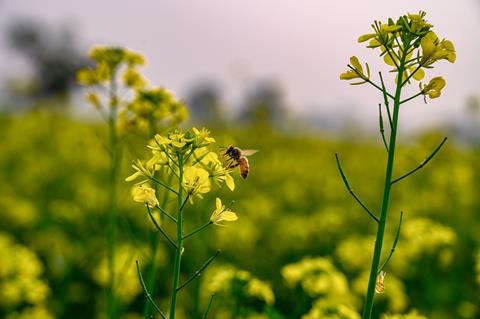
The outlook for real estate markets in 2024 is mixed, at best. The hope is it won’t be as bad as last year, when the asset class experienced varying degrees of repricing across the globe. As Tom Leahy, head of EMEA real assets at MSCI Real Estate Research, quips, “2023 has not exactly been a vintage year for real estate”.
Assuming the majority of value declines are now behind us, 2024 could offer up some opportunities, but the asset class is still suffering from a structurally compromised office sector and the fact that a large proportion of institutional investors are close to, or even above, their allocation targets. With interest rates still high, the so-called ‘wall of capital’ that competed for real estate assets during the lower-for-longer era is a lot lower now.
IPE Real Assets magazine has started the year with a focus on a different asset class (or asset classes, to be more accurate): land-based natural capital, in the form of forestry, agriculture and other related and adjacent investments.
It seems timely. According to a recent report by investment consultancy bfinance, asset managers with natural capital strategies are now in higher demand among investors than those in real estate. “The last year saw ‘natural capital’ manager searches for bfinance clients outpacing real estate manager searches for the first time,” said the firm, which specialises in mandate searches for asset owners. Bfinance defines natural capital strategies as those with forestry, agriculture, timberland or carbon credit-related themes.
The fact that these types of investments are attracting more institutional attention than they have in the past is probably down to a number of reasons – not least, investors’ search for further diversification within the alternatives space and the rising recognition and importance of biodiversity and carbon offsetting.
But there is a growing sense that institutional investors need to be in the space before they potentially miss out on the best opportunities. It is reminiscent of the widespread move into renewables by institutional investors over the past decade or so.

However, the terms natural capital, forestry, timberland, agriculture and farmland can cover a wide range of types of investments, risk profiles and objectives. The challenge for investors today is to be active in the space, but also to understand what they are investing in – and why.
In our natural capital report, we have, for the first time, ranked the 50 largest pension funds and similar institutional investors in forestry and agriculture. We have also compiled a series of case studies on individual funds, some of which are relatively new to the asset class and have yet to make it onto the Top 50 list (expect subsequent rankings to be dynamic as more investors move into the space in a substantial way).

What becomes quickly clear is that some of the most established investors in natural capital have longer histories in either forestry or agriculture and are investing in different ways and for different reasons. Some of the newer entrants look to be taking a more holistic approach to natural capital by including impact objectives as part of their strategy from the outset – rather than evolving their strategies in this direction, as can be seen in some of the more established players.
We have also included our ranking of the Top 25 natural capital investment managers, which includes a breakdown by forestry and agriculture. It is interesting to note that the largest in the list, Manulife Investment Management, is the largest manager of timberland, while the second-biggest, Nuveen, is the largest manager of agriculture.
We have also included a series of case studies of investment managers, which also shows the variety of specialisation and focus on offer to investors. The fund management industry serving the natural capital asset classes appears to be as diverse as its investor base.
But it is also evolving and innovating. As we explore, timber and agriculture fund managers are not only growing their assets under management – they are also incorporating new revenue streams, such as that from renewable energy and carbon credits and potentially further down the line, from biodiversity.
Mike Cerchiaro, a forester by background, took over as CEO of Forest Investment Associates (FIA) at the end of 2023. “I can appreciate the hard assets on the ground and the strategies that are necessary to drive good investment outcomes in this space. I’ve been in the forest investment business for 25 years and this is the most dynamic and exciting time I have ever known in the sector.”
























